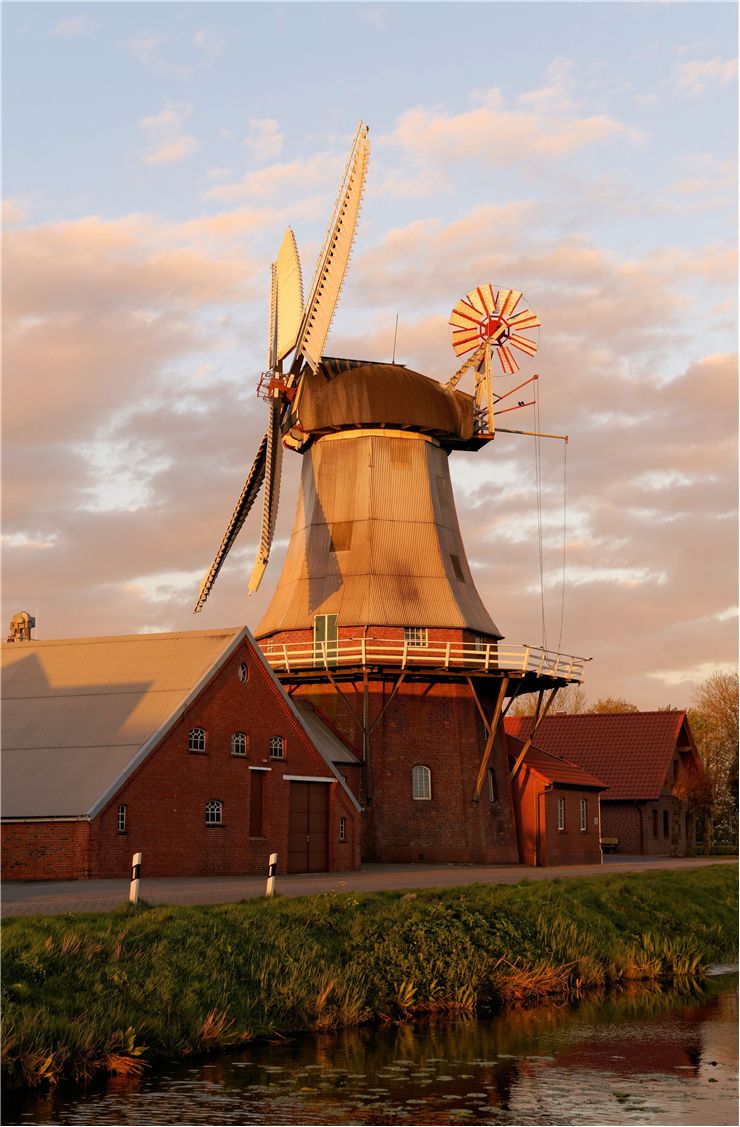History of Smock Mill - Uses and Construction
After arrival of tower mills managed to remove some inefficiencies of early models of post mills, engineers from all around the Europe started devising plans how they could create wooden windmills that are more sturdy, able to have rotating cap that can be moved in changeable wind conditions, and are most importantly, much cheaper to be made than tall stone or brick mills. While Post mills were mostly made in rectangular shape and tower mils as cylindrical strong structures, developers of smock mills chose to add more structural strength to the wooden mills by turning them into sloping towers with six or eight sides. This enabled smock mills to be much more resistant to strong winds, and because their vastly reduced weight, they could be easily built on more wet terrains that would not be able to support tower mills. To provide better environment resistance, outside walls of smock mills are usually weatherboarded or thatched, with top of the mill housing similar “cap” as tower mills. This cap consisted from wooden roof that housed wind sails and steering add-ons that can automatically rotate the cap so that windmill can take full advantage from surrounding wind. To make smock windmill sturdier, the floor of its structure was usually made from stone or bricks, with optional gallery built around the outside walls.
Even though smock mills were created well after Post and Tower mills became widespread in Europe, smock mills very quickly managed to became the most popular windmill type. Dozens and dozens of thousands of them were created all around the world, with many thousands surviving to this day, most notably in Netherlands where entire large territories of the land were transformed into industrial sites filled with hundreds of windmills. Netherlands has also built so many Smock mills because they were of the perfect design to help pump and redistribute water.
First Smock mill built in England was dated to 1650 and is located in Lacey Green, Buckinghamshire. Its current state is not original one, but restoration that was done in recent years. In USA, the oldest known Smock mill was built in 1764 on Nantucket Island, Massachusetts. After several restorations, this mill is still operational and can be visited as a tourist attraction.
